Intracellular Zn2+ Signaling Facilitates Mossy Fiber Input-Induced Heterosynaptic Potentiation of Direct Cortical Inputs in Hippocampal CA3 Pyramidal Cells
- PMID: 30833508
- PMCID: PMC6520511
- DOI: 10.1523/JNEUROSCI.2130-18.2019
Intracellular Zn2+ Signaling Facilitates Mossy Fiber Input-Induced Heterosynaptic Potentiation of Direct Cortical Inputs in Hippocampal CA3 Pyramidal Cells
Abstract
Repetitive action potentials (APs) in hippocampal CA3 pyramidal cells (CA3-PCs) backpropagate to distal apical dendrites, and induce calcium and protein tyrosine kinase (PTK)-dependent downregulation of Kv1.2, resulting in long-term potentiation of direct cortical inputs and intrinsic excitability (LTP-IE). When APs were elicited by direct somatic stimulation of CA3-PCs from rodents of either sex, only a narrow window of distal dendritic [Ca2+] allowed LTP-IE because of Ca2+-dependent coactivation of PTK and protein tyrosine phosphatase (PTP), which renders non-mossy fiber (MF) inputs incompetent in LTP-IE induction. High-frequency MF inputs, however, could induce LTP-IE at high dendritic [Ca2+] of the window. We show that MF input-induced Zn2+ signaling inhibits postsynaptic PTP, and thus enables MF inputs to induce LTP-IE at a wide range of [Ca2+]i values. Extracellular chelation of Zn2+ or genetic deletion of vesicular zinc transporter abrogated the privilege of MF inputs for LTP-IE induction. Moreover, the incompetence of somatic stimulation was rescued by the inhibition of PTP or a supplement of extracellular zinc, indicating that MF input-induced increase in dendritic [Zn2+] facilitates the induction of LTP-IE by inhibiting PTP. Consistently, high-frequency MF stimulation induced immediate and delayed elevations of [Zn2+] at proximal and distal dendrites, respectively. These results indicate that MF inputs are uniquely linked to the regulation of direct cortical inputs owing to synaptic Zn2+ signaling.SIGNIFICANCE STATEMENT Zn2+ has been mostly implicated in pathological processes, and the physiological roles of synaptically released Zn2+ in intracellular signaling are little known. We show here that Zn2+ released from hippocampal mossy fiber (MF) terminals enters postsynaptic CA3 pyramidal cells, and plays a facilitating role in MF input-induced heterosynaptic potentiation of perforant path (PP) synaptic inputs through long-term potentiation of intrinsic excitability (LTP-IE). We show that the window of cytosolic [Ca2+] that induces LTP-IE is normally very narrow because of the Ca2+-dependent coactivation of antagonistic signaling pairs, whereby non-MF inputs become ineffective in inducing excitability change. The MF-induced Zn2+ signaling, however, biases toward facilitating the induction of LTP-IE. The present study elucidates why MF inputs are more privileged for the regulation of PP synapses.
Keywords: CA3; hippocampus; intrinsic plasticity; mossy fiber; protein tyrosine phosphatase; zinc.
Copyright © 2019 the authors.
Figures
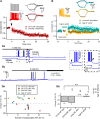
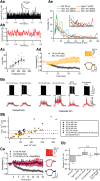

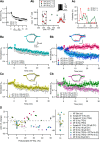
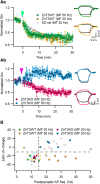


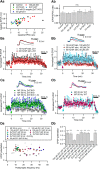


Similar articles
-
Input-specific bidirectional regulation of hippocampal CA3 pyramidal cell excitability.J Physiol. 2025 Jul;603(14):4005-4025. doi: 10.1113/JP288350. Epub 2025 Jun 19. J Physiol. 2025. PMID: 40538127 Free PMC article.
-
Kv1.2 mediates heterosynaptic modulation of direct cortical synaptic inputs in CA3 pyramidal cells.J Physiol. 2015 Aug 15;593(16):3617-43. doi: 10.1113/JP270372. Epub 2015 Jul 14. J Physiol. 2015. PMID: 26047212 Free PMC article.
-
Stable mossy fiber long-term potentiation requires calcium influx at the granule cell soma, protein synthesis, and microtubule-dependent axonal transport.J Neurosci. 2010 Sep 29;30(39):12996-3004. doi: 10.1523/JNEUROSCI.1847-10.2010. J Neurosci. 2010. PMID: 20881117 Free PMC article.
-
Short term plasticity at hippocampal mossy fiber synapses.Neuroscience. 2025 Jul 10;578:105-117. doi: 10.1016/j.neuroscience.2024.09.044. Epub 2024 Sep 26. Neuroscience. 2025. PMID: 39332701 Review.
-
Role of giant depolarizing potentials in shaping synaptic currents in the developing hippocampus.Crit Rev Neurobiol. 2006;18(1-2):13-23. doi: 10.1615/critrevneurobiol.v18.i1-2.30. Crit Rev Neurobiol. 2006. PMID: 17725505 Review.
Cited by
-
Excessive Zinc Ion Caused PC12 Cell Death Correlating with Inhibition of NOS and Increase of RAGE in Cells.Cell Biochem Biophys. 2022 Dec;80(4):755-761. doi: 10.1007/s12013-022-01093-1. Epub 2022 Sep 6. Cell Biochem Biophys. 2022. PMID: 36068383
-
L-type Ca2+ channels mediate regulation of glutamate release by subthreshold potential changes.Proc Natl Acad Sci U S A. 2023 Mar 21;120(12):e2220649120. doi: 10.1073/pnas.2220649120. Epub 2023 Mar 15. Proc Natl Acad Sci U S A. 2023. PMID: 36920925 Free PMC article.
-
Synaptic zinc inhibition of NMDA receptors depends on the association of GluN2A with the zinc transporter ZnT1.Sci Adv. 2020 Jul 3;6(27):eabb1515. doi: 10.1126/sciadv.abb1515. Print 2020 Jul. Sci Adv. 2020. PMID: 32937457 Free PMC article.
-
Heterosynaptic plasticity-induced modulation of synapses.J Physiol Sci. 2023 Dec 6;73(1):33. doi: 10.1186/s12576-023-00893-1. J Physiol Sci. 2023. PMID: 38057729 Free PMC article. Review.
-
Input-specific bidirectional regulation of hippocampal CA3 pyramidal cell excitability.J Physiol. 2025 Jul;603(14):4005-4025. doi: 10.1113/JP288350. Epub 2025 Jun 19. J Physiol. 2025. PMID: 40538127 Free PMC article.
References
Publication types
MeSH terms
Substances
LinkOut - more resources
Full Text Sources
Molecular Biology Databases
Miscellaneous
